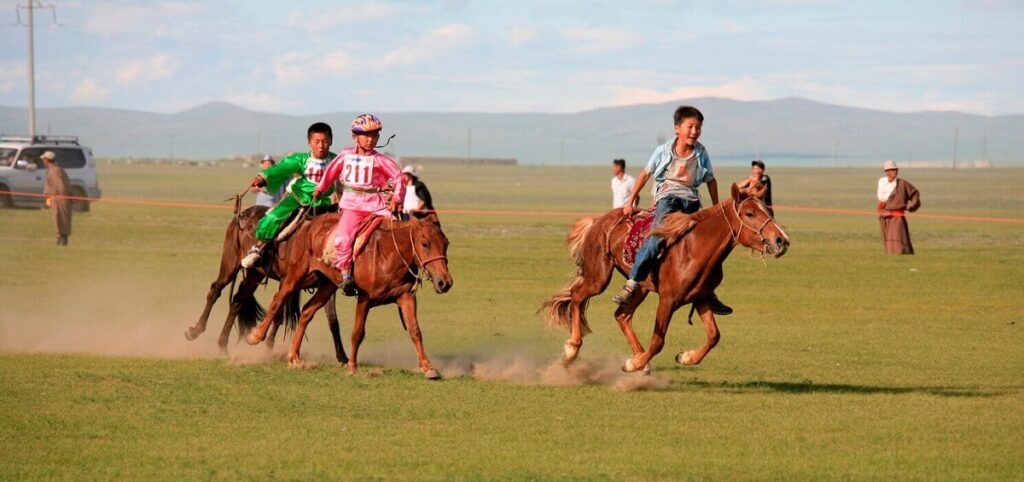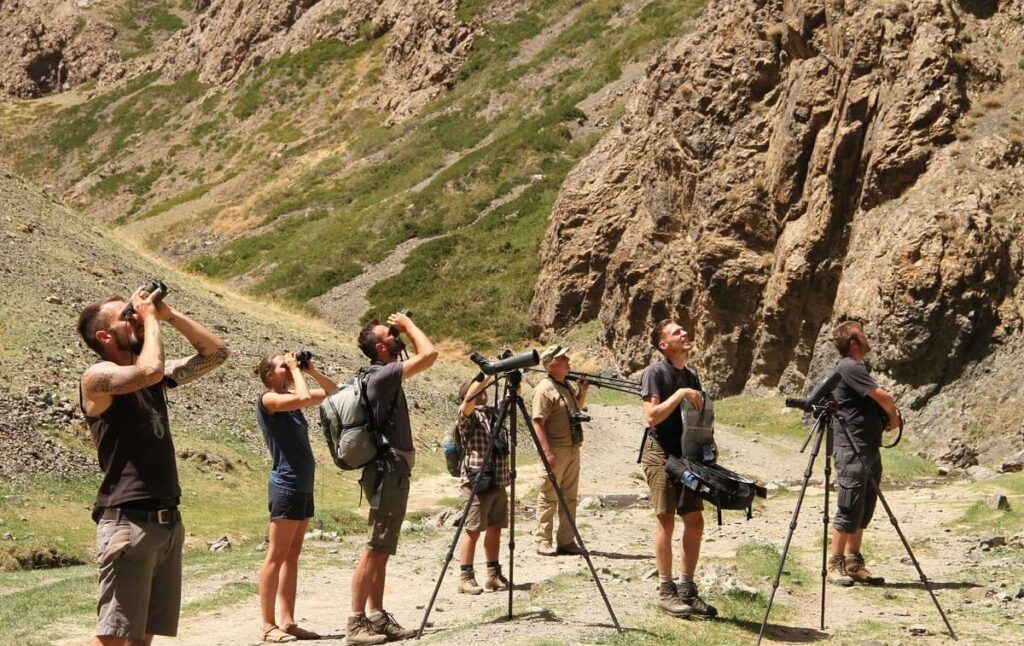Mongolian horse culture – For generations, the nomadic people of Mongolia have based their lives around raising livestock for food and drink.
Horses in particular are very important to them as they provide transportation and aid in domestic duties. No other place on Earth has horses more central to their way of life than Mongolia.
Elizabeth Kimball Kendall, an author who ventured through Mongolia in 1911 commented that you must see a Mongol on horseback to truly understand him.
She also mentioned that they rarely dismount because their horses are essential to them. The Mongol without his horse is only half a Mongol, but with his horse, he is as good as two men she remarked.
They often feature prominently in folklore and history because of their significance. There are words in the Mongolian language for “hero horse” and “hero with horse”. This comparison of man’s majesty and heroism with horses is a manifestation of the Mongolian custom of valuing horses.
We offer you MONGOLIA HORSE TREKKING TOUR. Come and enjoy the Mongolia Horse Riding Tour. Mongolia is home to the last nomads. Mongolian Horses are the most important part of nomadic life. It will be wonderful 🤩🤩
ABOUT MONGOLIAN HORSEMAN AND THEIR BRIEF HISTORY
Our Mongolia is known as the land of the horse, and Mongols have our earned a reputation for being the best horsemen. Children in the countryside learn to ride a horse when they are 3 to 5 years old and start racing from 6 to 12.
Over centuries, Genghis Khan and other nomadic Mongolian armies used chariots as well as mounted warriors to attack south of the Great Wall into Europe.
In the thirteenth century, Genghis Khan established an empire that extended from Hungary to Korea and Siberia to Tibet after gaining recognition in Europe as “Hell’s Horsemen.”
Mongols could ride up past 80 miles a day due their training while traveling through difficult landscapes like deserts and mountains– impassable until their arrival.
The Mongolian war horse was far more advanced than any other breed at the time. They didn’t need a lot of water and could go long periods without being fed grain like European horses, which made them better for winter campaigns against Russia.
Their ability to find food under the snow also helped during battle because they could outlast enemy cavalry.
The Mongol horse’s only disadvantage in wartime was that it was slower than other horses. However, this weakness was usually atoned by the fact that it carried less weight than the enemy cavalry. Each warrior usually brought at least 3 to 5 spare horses with him as remounts.
These horses have shown their strength throughout history, not just during the Mongol conquest.
- Russia built a memorial statue in Moscow, depicting a Mongol horse carrying heavy guns to Berlin, to remember that during World War II, Mongolia supplied them with half a million horses- one of every five being from Mongolia.
- Reckless, a Mongolian mare who served in the Marine Corps during the Korean War, is one of only two animals in US history to be promoted to the rank of sergeant. The horse made 51 solo trips during a five-day battle in March 1953, carrying nearly 4500 kg of ammunition and explosives from a supply depot to the front lines. She also evacuated wounded soldiers and dead bodies from the battlefield and quickly earned respect from all Marines she served with.
Nowadays
Outside of the capital Ulaanbaatar, horses are still the main mode of transportation in Mongolia today. They are valuable for their milk, meat, and hair; in fact, mares are milked six times a day during summer months.
Families use horse milk to make Airag – a mildly alcoholic beverage made by fermenting horse milk. Mare’s milk has also been used ceremonially in ancient purification rites, as well as prayers and blessings. The hair of horses is used to create musical instruments called morin khuur.
CARE OF MONGOLIAN HORSE
In the Mongolian countryside, it is not uncommon for a single family to own over 200 horses. However, as each family member typically has their own horse that they ride regularly, individual horses are ridden somewhat infrequently.
Because of this lack of constant handling and training, most of the horses become semi-wild and must be caught and broken anew each time they need to be used again.
To catch a horse, a herdsman mounts a trained catch-horse – one that is always fast and agile, yet calm enough for action. The herdsman then chases after the target horse he wants to loop the lasso around its neck.
He’ll pull back on the looped horse until it wearies and stops running; at which point, another rider will come up to put a saddle on it before mounting. Despite initially running and fighting against capture, eventually the horse will remember its earlier training and obey its new rider.
The Mongolians start to train their horses for riding at the age of three in order to avoid any back problems that could develop. The process is rather uncomplicated: the rider mounting and letting the horse loose to run until it’s fatigued, finally teaching it how to respond when its reins are pulled.
Usually, Mongolian horsemen are familiar with everything they need to do to take care of horses. Families typically don’t hire outside specialists like trainers or farriers. If there’s an extraordinarily difficult problem, the community elders might be called in, or a vet may come.
Books on horse training or medical care aren’t common and are hardly ever used. Instead, hereditary knowledge is passed down orally from parent to child.
Interesting facts
- Mongolians have a more naturalistic approach to horse care as opposed to other cultures. In Mongolia, there are rarely structures such as barns, stables, or pastures for horses.
- Horses are tough creatures – they can withstand temperatures as high as 45 degrees Celsius in the summer and as low as minus 45 degrees Celsius in the winter.
- Generally, horses don’t require baths or special foods like grain, vegetables, or hay. They prefer to graze on steppes and will remove snow with their hooves to get to the grass underneath in winter. When it comes to water, they’ll eat snow or drink from rivers and lakes.
- Most horses, despite living in harsh conditions, live to be 20 to 30 years old. When a favorite horse dies, the owner usually disposes of the remains in respectful ways. For example, if a horse is killed for food, its skull should be left in the field because of the sacredness of the horse. It is considered taboo to step upon a horse’s skull or hooves.
- In Mongolia, people don’t typically name their horses. They distinguish them by physical characteristics like color, markings, scars and brands instead. The Mongolian language has over 500 words that describe different horse traits, including 250 terms for coat color and pattern.
- September is the time of year when many horse breeders brand their foals in order to demonstrate ownership. This tradition dates back to ancient times, when brands were used to indicate a person’s ancestral status within their kin group. Today, branding horses can still be seen as a way of demonstrating one’s wealth or social standing.
- The family selects a sacred horse from their herd every so often, which can be identified by the blue scarf tied around its neck. The horse is generally never ridden, but on special occasions, the head of the household may ride it.






























